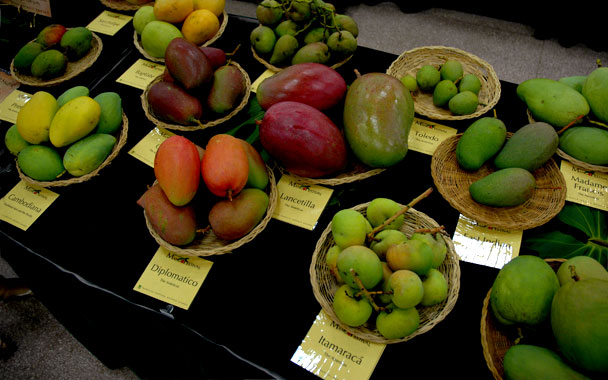Chef Allen Susser—the Mango Man—is biting into a Julie, one of the Caribbean’s finest mangoes. Unlike the stringy, fibrous varieties sold in American supermarkets, this one is totally smooth. Its intense sweetness is balanced by background notes of cinnamon and clove, as well as a powdery marshmallow texture. “That chalkiness, or muskiness, is really brought out by the acidity,” explains Susser, licking Julie juice off his fingers. “In the States you eat a mango and then it’s gone. You don’t get that mouthful of aromatics that just lasts and lasts and lasts.”
Susser is in St. Lucia for a weekend of Mango Madness—an event dubbed “1001 Things to do with a Mango Before You Die”—that is being held at Jade Mountain restaurant at the Anse Chastanet resort. A founder of Miami’s original “mango gang,” Susser, who was called the “Ponce de Leon of New Florida cooking” by The New York Times, is also the spokesman for The National Mango Board and the author of The Great Mango Book. He has found his promised land in St. Lucia. Not only are there mangoes everywhere, but he gets to present them in a breathtaking setting at Jade Mountain. Overlooking the Piton world heritage site, this architectural marvel of a restaurant has no walls and is only partially covered, creating the impression that there’s nothing between you and the Milky Way except a mango tree laden with ripe, juicy fruit.
At the gathering, Susser hands out variety after variety of mindblowing mangoes, each infinitely better than the ones we’re used to in North America. “Right now, shoppers can only buy one or two types of mango,” laments Susser. “We need to get past that.” Florida, the nucleus of the American mango industry, was also the birthplace of the now ubiquitous Tommy Atkins. The most widely grown commercial variety, the Tommy Atkins was chosen for its durability and named after an early 20th century military term for a faceless soldier. Gary Zill, whose father sent the first shipment of Tommy Atkins mangoes to Mexico, is today working on developing varieties that not only taste delicious but can survive the supermarket cold chain. “You’re never going to get people excited about the mangoes in our grocery stores today,” contends Dr. Richard J. Campbell. The week before Susser’s St. Lucia event, Campbell organized a conference on the future of the mango industry at the Fairchild Tropical Botanic Garden in Florida, home to hundreds of trees filled with a multicolored array of pendulous orbs. The colors—sunset orange, deep purple, pure gold, soft white, peachy pink—are as vibrant as the flavors. Some taste like vanilla-cardamom ice cream, others recall a fresh piña colada or silky apricot-rosewater pudding.
Here’s more good news: The ataulfo, or Champagne mango, has already become a major success; Indian mangoes are now being imported into the U.S.; and the exotic food distributor, Melissa’s, is bringing new mangoes like the green Keitt (grown near California’s Salton Sea) to market. With any luck, instead of doing 1001 things to mangoes, we’ll soon be eating 1001 different kinds of mangoes.


